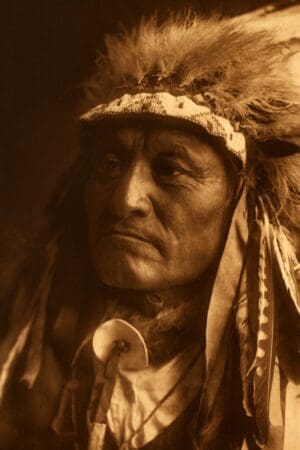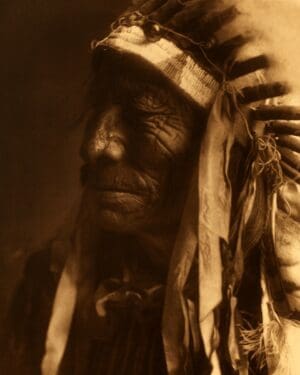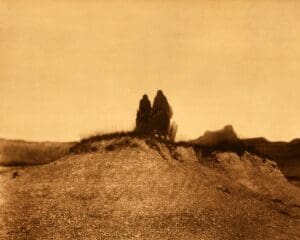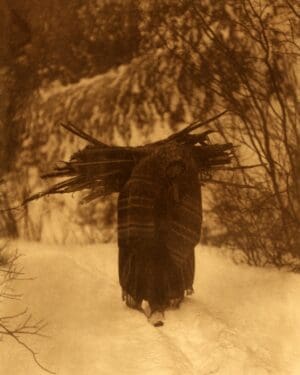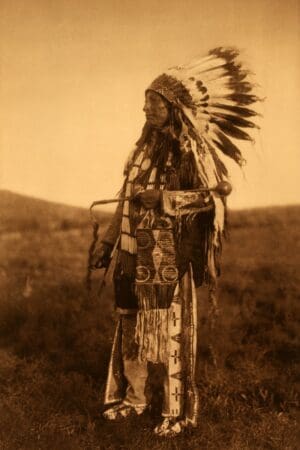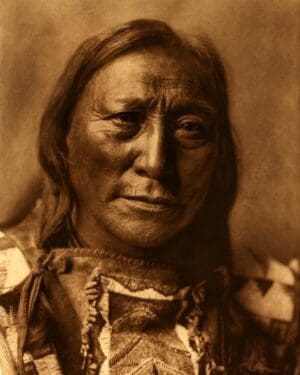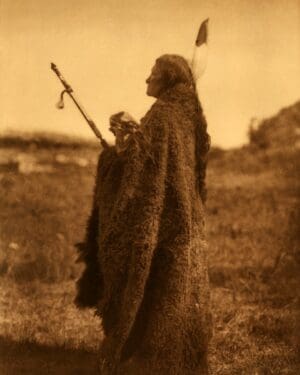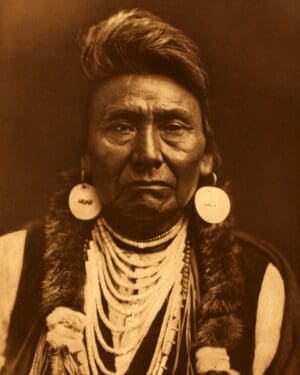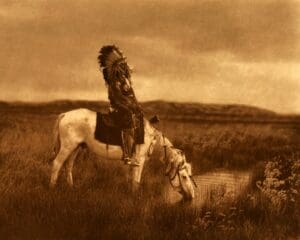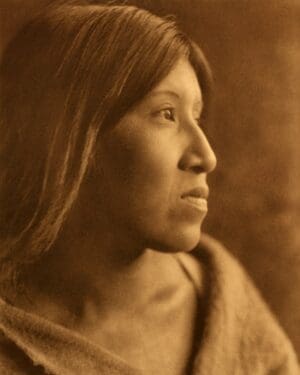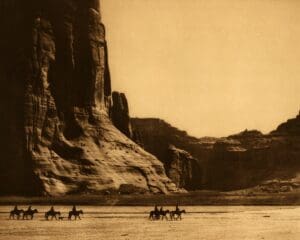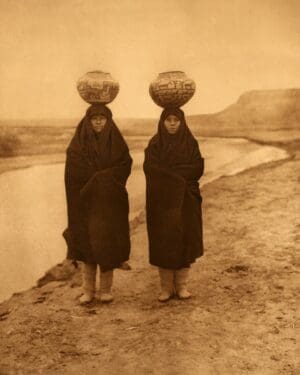Lakota / Teton Sioux Native Americans
Lakota / Teton Sioux Indian Photos by Edward S. Curtis
Tribal Summary
Dress
Lakota Indian men wore hip-length leggings, loin-cloth, and moccasins, all made from tipi coverings softened by weathering and by long exposure to smoke; for ceremonial or festal occasions finer garments of deerskin richly embroidered with dyed porcupine-quills. Customarily no shirt was worn, the upper body, when necessary, being covered with a buffalo-skin belted at the waist but not fastened in front. Those who had performed certain prescribed feats in war were entitled to wear shirts adorned with scalp-locks.
The war-bonnet of eagle feathers arrayed in a circlet about the head and extending in a flowing train even to the heels was worn on special occasions by warriors; but this form came into use only after the introduction of horses. In suitable weather boys up to the age of about ten years went naked. The hair in a small circle about the crown of the head was braided and tied at the end with a thong- the so-called scalp-lock. From this circle to the temples extended two diverging lines of parting; the hair between them, hanging over the forehead, was cut at the level of the eyes and curled upward by frequent wetting; the remainder hung in front of the shoulders in two braids wrapped with strips of otter- or beaver-skin.
Women wore deerskin dresses reaching half-way below the knee, with elbow-length sleeves open at the armpits and tied with thongs on the upper and under sides. Leggings extended from ankle to knee, and moccasins were ornamented with quill work. In winter a buffalo-robe was worn for additional protection, and both women and men wore moccasins of buffalo-skin with the hairy side inward. Dresses for other than ordinary wear were fringed at the bottom and under the sleeves, and ornamented with designs in quill work. Earrings were pieces cut from clamshell, sometimes many of them in a string; massive ornaments made by stringing cylinders of bone were hung about the neck.
The hair was parted in the middle from forehead to nape of neck, each half hanging in front of the shoulders in a braid tied at the end with a thong. The hair of children was parted in the middle and braided on each side with stiffening of strips of rawhide.
Dwelling
The tipi, a portable structure consisting of a framework of poles covered with buffalo-skins tanned almost white, which, however, turned brown with use. Inside was hung a curtain to deflect upward the air that entered under the loosely pegged tipi-cover. At the peak was the smoke-hole, with two Haps extending outward for regulating the draft. The two ends of the cover were fastened together in front with wooden pins. When dogs were used as pack-animals the tipi was about ten feet in diameter, requiring six or seven skins; after the advent of the horse sixteen or more were used.
Food
Besides furnishing material for clothing and dwellings, as well as many utensils, the buffalo was the principal source of food. Many other animals and some birds were eaten, as taste or necessity demanded, and berries and roots of many sorts were gathered for food by the women.
Showing 1–9 of 33 results
-
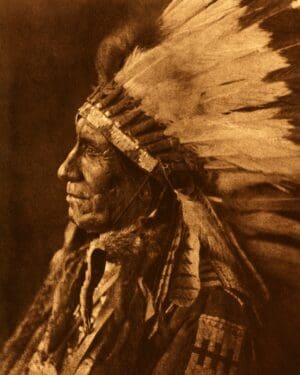
American Horse – Ogalala
Price range: $26.25 through $172.50 -

Brule war-party
Price range: $26.25 through $172.50 -

Crazy Thunder – Ogalala
Price range: $43.75 through $247.50 -

Fast Elk
Price range: $26.25 through $172.50 -

Gray day in the Bad Lands
Price range: $26.25 through $172.50 -

Heavy load – Sioux
Price range: $26.25 through $172.50 -

High Hawk
Price range: $43.75 through $247.50 -

Hollow Horn Bear
Price range: $26.25 through $172.50 -

Hukalowapi ceremony
Price range: $26.25 through $172.50


